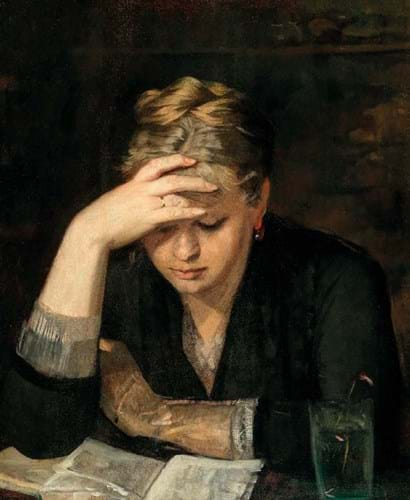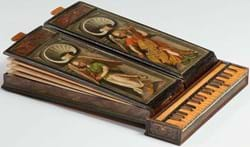The artist, who came from an aristocratic Russian family, was born in the Ukraine but lived and worked in France, where she died of tuberculosis in 1884, aged only 24.
She was a prolific painter; her legacy contained over 200 paintings. However, she also destroyed a great number of other works that did not meet her exacting standards. While in Nice, she threw several unsatisfying canvases into the sea.
In or about 1880, Bashkirtseff painted The Reader, a 2ft 1in x 21in (64 x 53cm) portrait of her cousin Dina Babanina. After she was finished, she was unhappy with the result and slashed the canvas with a knife. In 1880 she painted another version of the same subject, which now belongs to the museum in Kharkiv.
Unbeknown to her, Bashkirtseff’s mother kept the damaged canvas and after her daughter’s untimely death, repaired it provisionally. When it was exhibited in Vienna in 1910 as part of a show devoted to women artists, the cuts were still visible. The portrait was purchased there by Margarethe Stonborough-Wittgenstein, the sister of the philosopher Ludwig Wittgenstein and a famous patron of the arts, and has passed by descent to the Austrian collector who consigned it for sale. In the meantime, it had been carefully restored.
The starting price at the sale held on June 7 by Dorotheum (28/25/22% buyer’s premium) was €25,000, but the hammer only fell at €120,000 (£103,450).
Naples doubles up
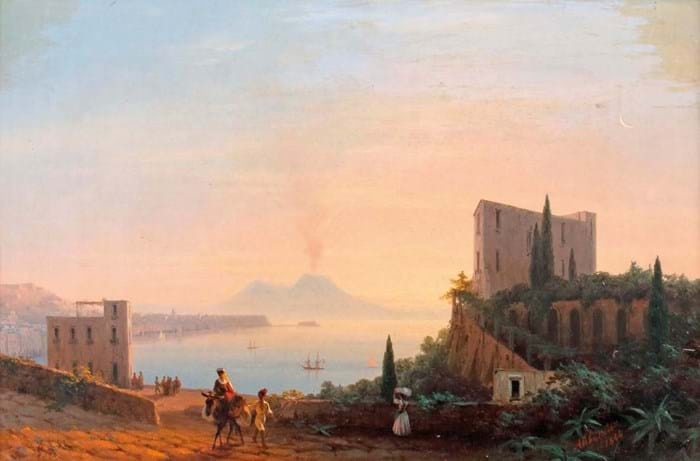
Siebers in Stuttgart achieved €270,000 (£232,760) for Iwan Konstantinowitsch Aiwasowski’s 'Sunrise over Gulf of Naples with Vesuvius'.
In March of this year, Yves Siebers (25% buyer’s premium) in Stuttgart achieved substantial prices for paintings by Polish artists who had primarily trained and worked in Munich.
They came from the collection of a German family of textile merchants, who moved from south Germany to Lodz, south west of Warsaw, in the 1930s and later returned to Germany.
Two further paintings from the same source were the highlights of the auction Siebers held on June 24. They were a matching pair with 14 x 21in (35 x 53cm) views of Naples, painted in 1844 by Iwan Konstantinowitsch Aiwasowski (1817-1900).
The artist had travelled extensively in Italy in the early 1840s, gathering subjects that he executed after his return to Russia in the year he painted the two landscapes that were offered in Stuttgart for €85,000 apiece. One depicted Sunrise over Gulf of Naples with Vesuvius, the other The Gulf of Naples with Vesuvius in Moonlight.
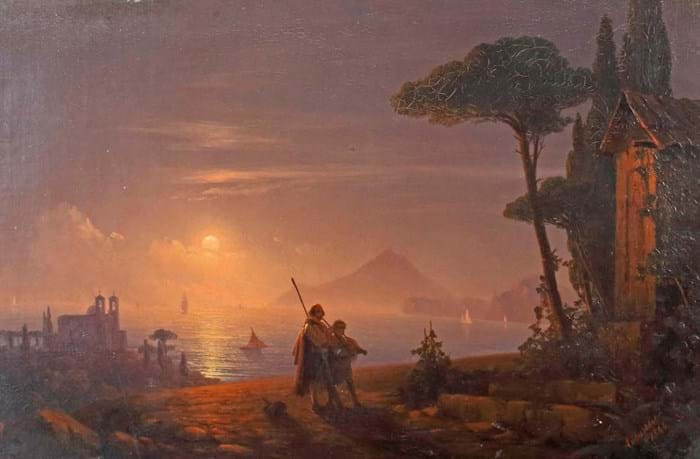
Siebers in Stuttgart achieved €200,000 (£172,415) for for Iwan Konstantinowitsch Aiwasowski’s 'The Gulf of Naples with Vesuvius in Moonlight'.
Aiwasowski’s paintings are consistent favourites with Russian bidders and they vigorously joined the action in the sale, with bids arriving from Moscow, St Petersburg, the Ukraine and Germany. The pair of paintings is no longer together: the sunrise was knocked down for €270,000 (£232,760), the moonlight at €200,000 (£172,415). Both buyers were Russians, living in Germany.
Landscape memories
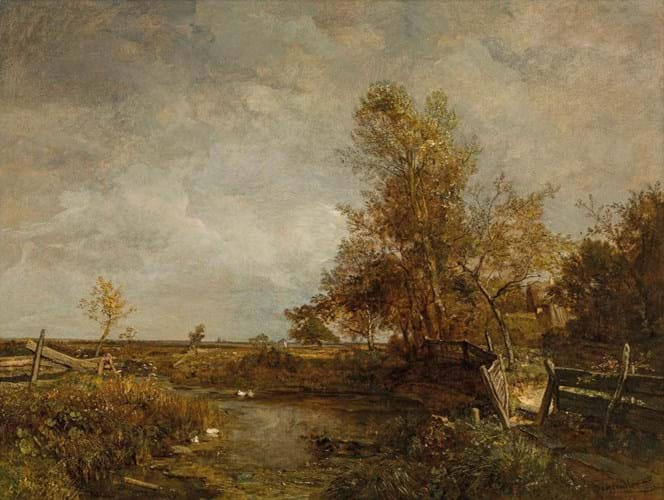
Emil Jakob Schindler’s 'Landscape near Zutphen' went way over the guide to sell for €102,000 (£87,930) at Kinsky in Vienna.
One of the surprises at Kinsky’s (25% buyer’s premium) July 6-8 sale in Vienna was Emil Jakob Schindler’s (1842-92) Partie aus Zütphen (Landscape near Zutphen), which is also known as Memory of Holland.
In summer 1875, the Viennese artist had visited the Netherlands with his painter colleague Tina Blau. Both were fascinated by the Old Masters they encountered in museums and galleries, but also by the landscapes that had figured prominently in their works.
The visit had a long-lasting influence on Schindler’s painting. In 1882 he executed the 1ft 11in x 2ft 7in (59 x 78cm) canvas offered by Kinsky with a reserve of €35,000.
In the 1880s-90s the painting was shown at several exhibitions in Austria and Germany, returning to Vienna in 1892, where it was purchased by Dr Anton Loew, the owner of a sanatorium in the Austrian capital. It later passed to his daughter Gertrud. After the annexation of Austria in 1938 the sanatorium was forced to close and a year later Gertrud fled with her children to the US, leaving her art collection behind.
Most of the works of art have disappeared; only a handful were returned to Gertrud Loew-Felsövanyi‘s descendants. Thanks to a private agreement between them and the last owner of the painting, Partie aus Zütphen was restituted to the family and consigned for sale. The anonymous bidder who secured it after a prolonged bidding match had to put up €102,000 (£87,930) to win the day.
Caravaggio influence
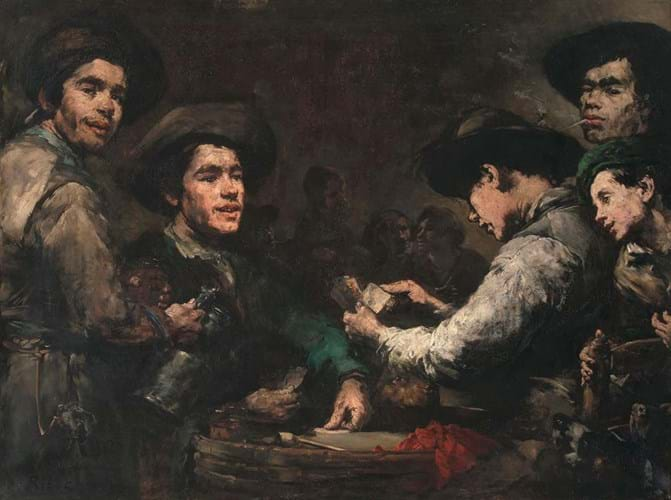
Théodule Augustin Ribot’s tavern scene 'Cabaret normand' from 1875 was knocked down for SFr80,000 (£63,490) at Schuler in Zurich.
For the 19th century French painter Théodule Augustin Ribot (1823-91), one of the greatest influences was Caravaggio.
This was apparent in his 3ft 3in x 4ft 3in (98cm x 1.3m) Cabaret normand, a tavern scene with card players from 1875, which caused a stir at Schuler (23/20/16% buyer’s premium) in Zurich at the sale of June 14-18. It had been exhibited at the 1878 Exposition Universelle in Paris and the subject was so important in the artist’s oeuvre that Alphonse Masson created a lithograph of it, an example of which can be found in the British Museum.
The provenance can be traced back to its first owner, the French collector Monsieur J Debrousse, who bought it in 1878. Cabaret normand was also shown at the Exposition Universelle of 1900, as can be seen by a label on the back of the painting. It subsequently belonged to several other French art lovers before it was eventually purchased by a collector in Lucerne. Since then, it has remained in Swiss hands.
The guide was set at SFr15,000-25,000 but determined bidders saw to it that the final price was SFr80,000 (£63,490).


